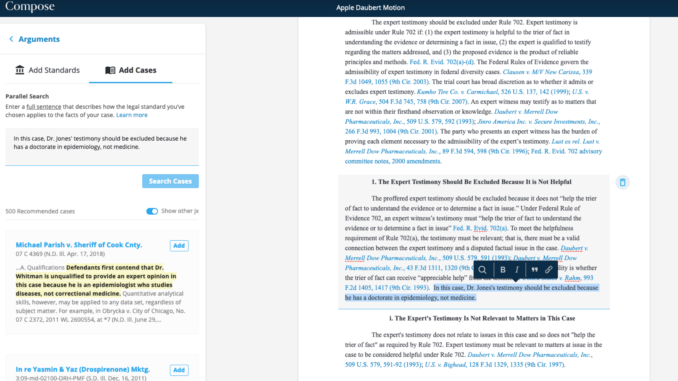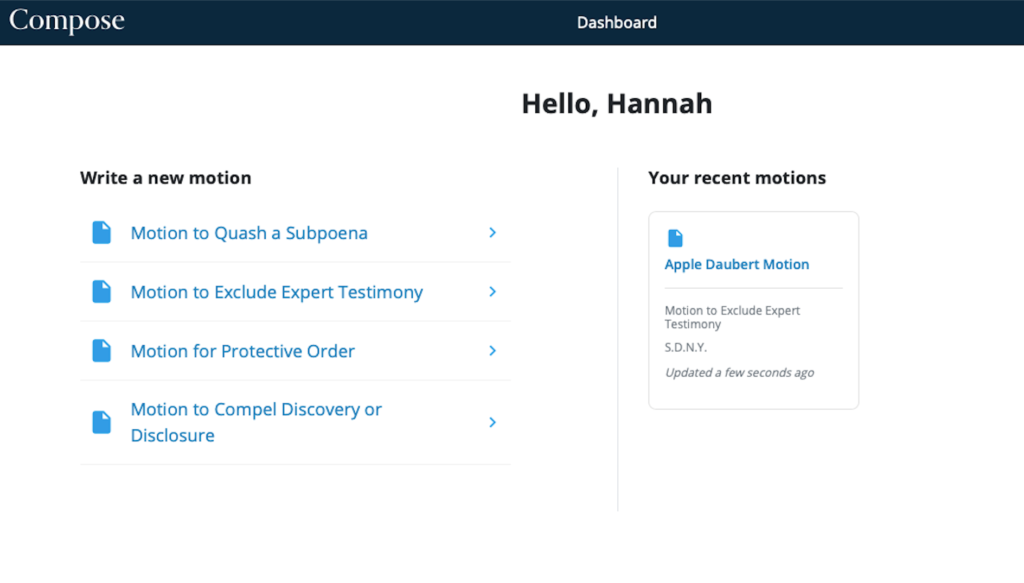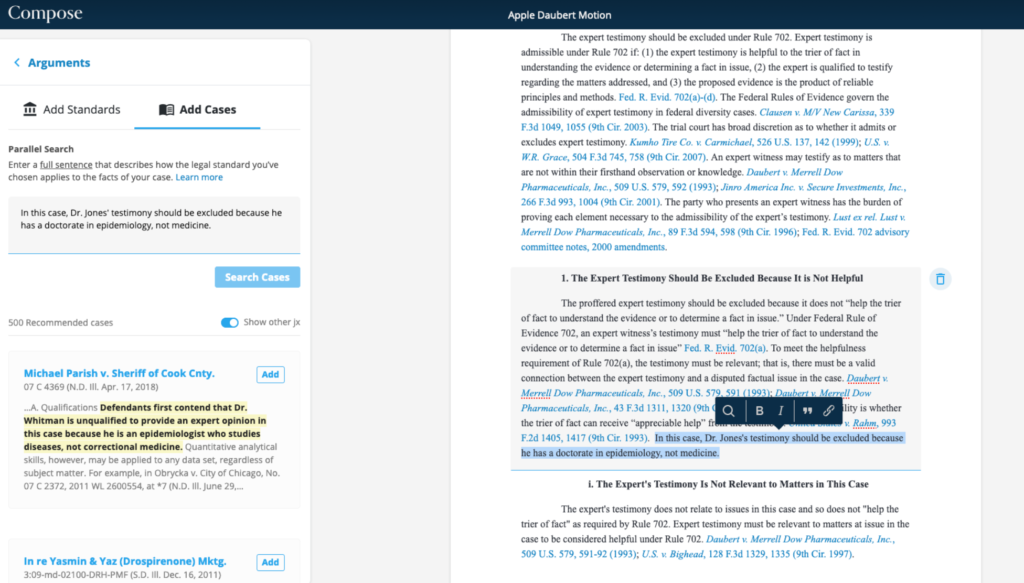
Legal research pioneer, Casetext, has today launched a new NLP-driven system, called Compose, for generating the first draft of legal briefs that could have a major impact on how US lawyers handle litigation.
The short version of what it does is that it auto-generates a list of all arguments and related legal research data that will be relevant to writing a certain type of brief. You then click on what you want to add to your brief and can rapidly build your document.
Or as the company explains: ‘Compose enables an attorney to construct a well-supported legal argument in 20 minutes. You simply enter basic information about the brief you want to draft and Compose provides the available arguments and applicable legal standards, which you can add with a click.’
In effect this is tapping NLP to understand the dispute and explore Casetext’s expanding legal database, then you draw down the elements that likely should be added to complete your brief.
This is leveraging data that already exists, but is turning it into something quite valuable that is delivered straight to a lawyer’s desktop.
The system does this by: ‘searching case law databases, consulting treatises, and digging through brief banks. Compose then provides the available arguments and applicable legal standards, which you can add’.
Speaking to Artificial Lawyer, Casetext founder and CEO, Jake Heller said: ‘This is beyond just research, this is the end product.’
Of course, Heller adds, this is a first draft, but in a very short time a lawyer working with Compose can put together a well-researched brief, that contains relevant legal arguments and past case examples, massively shortening the time needed to put together this stage of a piece of litigation.
He noted that this could have a huge impact on litigation work in the US, where he said: ‘Some firms may bill 50 to 100 hours to write a brief. The minimum expense, for example, for a motion to dismiss a case is around $120,000. This involves many associates and partners.’


Heller gave Artificial Lawyer a demo of the system and there is a lot more to it than can be described here. One example of the granularity you can reach is with the system noting in green or red which arguments related to your matter are for or against your position, which it automatically assesses.
It will also find other cases related to yours, even if there is not the use of similar language, as the NLP has been trained to pull out concepts, rather than just specific word tags. This helps to make sure you don’t miss out on important legal research because of the way it was phrased in a previous case.
Several law firms are already using it, of which the following can be named, Ogletree Deakins, Sheppard Mullin, and Bowman and Brooke. There are others – some very large, and there is interest from inhouse legal teams – but their names cannot be mentioned yet.
Heller also pointed out to Artificial Lawyer, for a large insurance company, for example, which is spending $100Ms on defending itself against legal claims, this technology could have a huge positive impact economically.
To sum up, it’s a very important development – as least from Artificial Lawyer’s perspective. Or as Heller puts it, this is a case of Litigation Automation, plus, ‘Just add a touch of human’.
I.e. this is really doing a lot of the leg work for you. The data is there, and it makes total sense to tap it in this way.
And, to conclude, if this takes off – which it looks likely to – and given that litigation is half the US legal market by value – then Compose could have a profound effect.
2 Trackbacks / Pingbacks
Comments are closed.